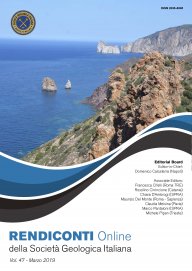
The hydrogeological monitoring of an experimental site in Campania focused at the evaluation of the contaminants transfer from the soil
Alfonso Corniello (1), Daniela Ducci (1) & Mariangela Sellerino (2)
(1) Department of Civil, Architectural and Environmental Engineering, University Federico II, P/le Tecchio 80, 80125 Naples, Italy.
(2) Research fellow c/o Interdepartmental Research Center for Environment, University Federico II, Via Mezzocannone 16, 80134 Naples, Italy.
Corresponding author e-mail: alfonso.corniello@unina.it
DOI: https://doi.org/10.3301/ROL.2019.05
Volume: 47/2019
Pages: 24-30
Abstract
In the framework of Life-Ecoremed Project, aimed at the ecocompatible remediation of contaminated soils, the beryllium and tin transfer from soil towards groundwater has been evaluated in an experimental site near the small town of Teverola (Campanian plain, southern Italy). Building a 3D hydrostratigraphic model through
interpretation and interpolation of borehole data supported the study; groundwater has been characterized and monitored by means of periodic (almost monthly) piezometric measures, sampling and chemical analyses. In the site, two overlapping aquifers are present and separated by an impervious paleosol. The 3D hydrostratigraphic model supported the development of the groundwater flow model of the shallow aquifer. All chemical data indicate the absence of migration of the contaminants towards the aquifers, also the shallower, in accordance with the characteristics of the aquifers and the low solubility of the contaminants present in the soil.
Keywords
Get Full Text